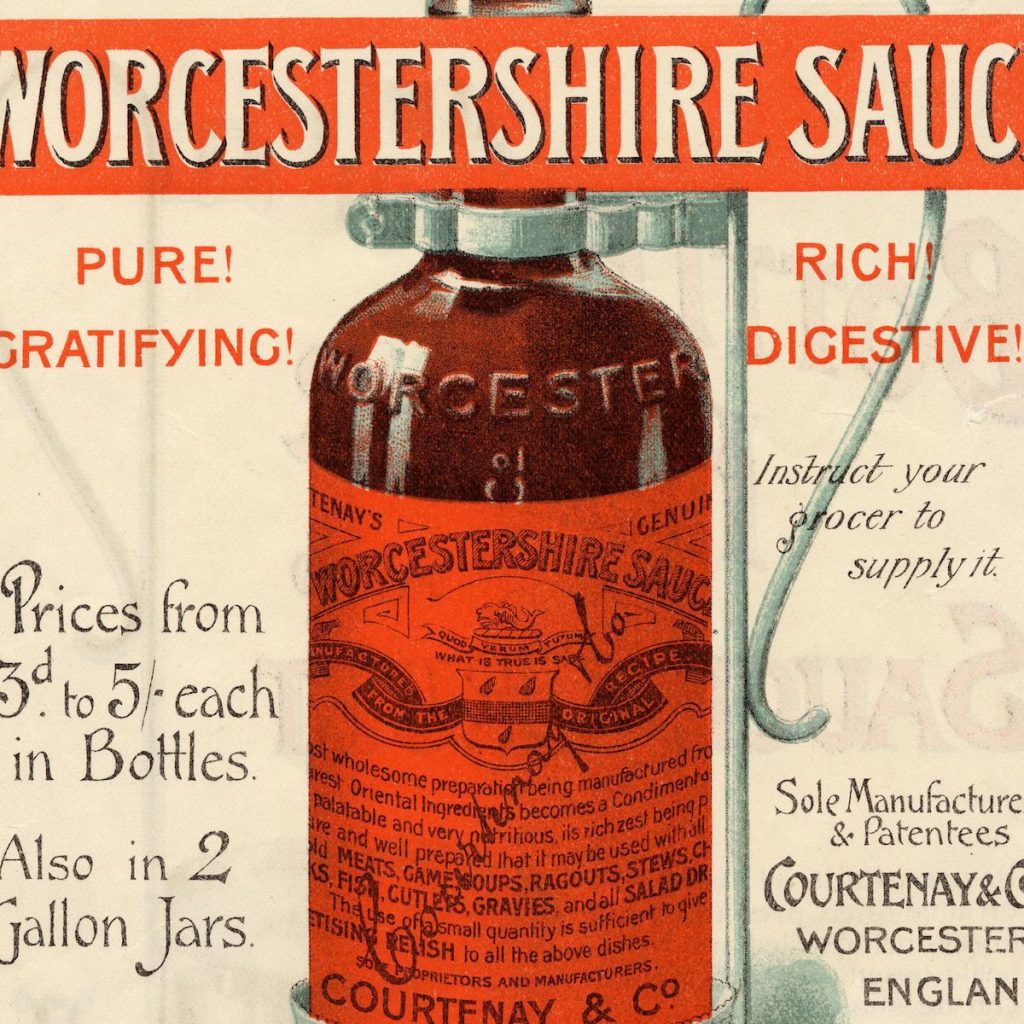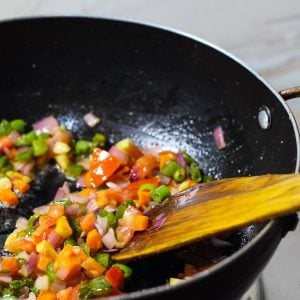What Is Worcestershire Sauce?
Worcestershire sauce packs a punch. It’s bold, tangy, savory, and just a little funky—in the best way. A few drops can completely transform a dish. That’s why home cooks and chefs alike keep it close at hand.
This sauce brings serious flavor. Made with anchovies, vinegar, molasses, tamarind, and spices, it hits all the key notes: salty, sweet, sour, and umami. It’s a flavor bomb in a bottle.
You’ve probably splashed it into a Bloody Mary or brushed it onto meat before grilling. But Worcestershire sauce does way more than that. It deepens stews, wakes up marinades, and gives burgers that crave-worthy edge. A few dashes in a pan sauce or even a vinaigrette can take things up a notch.
This post explores the use of Worcestershire sauce in everyday cooking. We’ll explore what makes it special, how to pair it with various ingredients, and when to let it truly shine. Whether you’re seasoning meat, mixing a cocktail, or boosting a broth, Worcestershire sauce has your back.
Ready to elevate your recipes? Let’s explore all the ways this little bottle delivers big flavor.
What Is Worcestershire Sauce?
Worcestershire sauce is a fermented condiment made with a blend of vinegar, anchovies, tamarind, molasses, and various spices.
It is known for its distinctive flavor, which is tangy, salty, and slightly sweet. Worcestershire sauce is commonly used in various dishes to add flavor and depth, including marinades, sauces, and soups.
A Little History of Worcestershire Sauce
 Worcestershire sauce was first made in the early 19th century in the city of Worcester, in the county of Worcestershire, England. Its exact origin is somewhat shrouded in mystery. Still, it is believed to have been developed by two chemists, John Wheeley Lea and William Perrins, who worked for a local pharmaceutical company.
Worcestershire sauce was first made in the early 19th century in the city of Worcester, in the county of Worcestershire, England. Its exact origin is somewhat shrouded in mystery. Still, it is believed to have been developed by two chemists, John Wheeley Lea and William Perrins, who worked for a local pharmaceutical company.
According to the story, the chemists were asked to create a sauce for a local nobleman who had acquired a taste for a similar sauce while serving as a governor in India. The chemists produced a batch of the sauce but found it to be too strong and unpleasant to eat.
They stored the batch in a cellar, where it was forgotten for several years. When they rediscovered the sauce sometime later, they were surprised to find that the flavor had improved significantly and that it was now much more palatable.
Lea and Perrins began selling the sauce commercially under the name “Lea & Perrins Worcestershire Sauce.” The sauce quickly became popular, and the company is still in business today, producing the same recipe that has been used since the 19th century. Worcestershire sauce is now widely available and used as a condiment and flavor enhancer in many countries worldwide.
“What’s This Here Sauce”
That’s what we call Worcestershire sauce in our house. Most of us have used Worcestershire Sauce in some dishes they have prepared. Growing up, there was always a bottle on the table when my mom served beef stew.
When I make beef stew and add a few drops to my plate, it takes me back to my childhood. Funny how some foods do that to you.
What About Those Secret Ingredients?
The exact recipe for Worcestershire sauce is a closely guarded secret, known only to a select few within the Lea & Perrins company. However, it is generally known that the sauce is made from a fermented mixture of vinegar, molasses, sugar, salt, anchovies, tamarind, garlic, and other spices and flavorings.
Anchovies, a key ingredient in Worcestershire sauce, give it its distinctive, savory flavor. The tamarind, a tropical fruit, adds a slightly sour and fruity flavor. Garlic and other spices, such as cloves and chili peppers, complement the sauce’s flavor profile, lending it a complex, savory taste.
While the exact proportions of the ingredients in this popular sauce are closely guarded secrets, it is known that the sauce is made by combining all the ingredients, allowing them to ferment for several weeks, and then aging the mixture for several more months before bottling. The resulting sauce is a dark, rich condiment with a complex, savory flavor that serves as a seasoning and marinade for various dishes.
The Process Is a Secret Too:
What really sets it apart is the aging process. The ingredients are blended and then aged in barrels for up to 18 months. This slow fermentation builds its rich, layered flavor.

What Are Some Popular Recipes Using Worcestershire Sauce?
Worcestershire sauce is a versatile condiment that can be used in various recipes to add depth of flavor and a savory, umami taste. Some popular recipes that feature Worcestershire sauce include:
These are just a few examples of how Worcestershire sauce can be used in cooking. It is a versatile condiment that adds depth of flavor to various dishes.
| Dish | Description | Why Worcestershire Works |
|---|---|---|
| Bloody Mary | A savory cocktail made with tomato juice, vodka, and spices | Adds depth, umami, and a punch that cuts through the acidity of tomato juice |
| Caesar Salad | Creamy, anchovy-rich dressing for crisp romaine and croutons | Boosts umami and saltiness; reinforces the anchovy flavor without overwhelming |
| Burgers & Meatloaf | Ground meat dishes shaped and cooked, often with onion and spices | Enhances meaty flavors, keeps the mix juicy, adds complexity without extra fat |
| Beef Stew | Slow-cooked chunks of beef with vegetables and broth | Deepens the savory profile and enhances the richness of the sauce |
| Welsh Rarebit | A savory cheese sauce poured over toast | Balances sharp cheese with tangy, malty, umami notes |
| Marinades for Steak | A liquid soak for tenderizing and flavoring cuts of beef | Penetrates meat with salty, acidic, and savory components that build crust and flavor |
| Deviled Eggs | Hard-boiled eggs with a seasoned yolk-mayo filling | A drop or two adds zing and balances the richness of mayo and egg yolk |
| French Onion Soup | Caramelized onions in beef broth, topped with bread and melted cheese | Enhances the depth of the broth and balances the sweetness of onions |
| Shepherd’s Pie | Ground meat and veggies topped with mashed potatoes and baked | Adds umami to the meat base and gives a slightly tangy edge to the savory filling |
| Grilled Cheese Dip | A savory dip made with melted cheese, onions, and spices | Cuts through richness, adds tang, and lifts the entire flavor profile |





7 Responses
It’s also probably pretty close to garum, a common ingredient in Roman cooking. Which matches up perfectly with Worcester being “a Roman hub of trade and manufacturing”.
I’m sad now because I have a cast iron dutch oven, but it’s not the enameled variety. You’re never supposed to deglaze cast iron, right? I got this beloved piece for less than $50. Tell me I don’t have to spend hundreds on a Le Creuset now, please…
Hi Scott, I don’t thing there is any problem deglazing in cast iron. I have done it with success and I’ve read several recipes that call for the same technique. You have to be extra careful if you deglaze with any liquids with alcohol because the pan gets very hot and could ignite the booze. Might want to remove it from the heat first. You also want to make sure your pan is well seasoned before deglazing with any acid liquids too.
Just wondering if any of you know of or have heard of a man named David Wade? He had a local TV cooking show in Dallas 30+ years ago. Anyway, he had invented something he called Worcestershire Powder. Best I recall it was sold under his name brand. I did an internet search and it looks like it might still be available as an on line purchase.
I had not heard of David Wade but he was an early pioneer in television cooking shows. He passed away in the late 1990’s. – RG
Drew: Indeed. Garum was made from fermented fish and inevitably shared some flavor dimensions with anchovies, which are used in Worcestershire. The ultimate unifying component of course, across all these ingredients and concoctions is the taste sensation umami.
Hi Mark, thanks for clarifying the term Garum. – RG
I’d like to dovetail on what RG said about cast iron. As long as you properly season it before the first use, re-season from time to time, and clean it after each use, (they recommend salt and oil not soap), you can degalze it. In a nutshell, seasoning and cleaning it prevents rust and as long as its not rusty, you can deglaze with impunity.
Thanks Mark for making that clearer. – RG